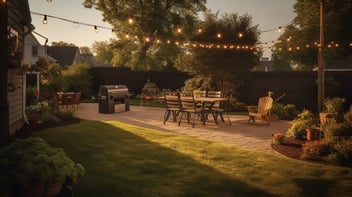The Benefits of Using Mulch in your Garden
Mulch serves several purposes in the garden, including suppressing weeds, slowing moisture evaporation, and improving soil texture. Additionally, a layer of mulch helps to moderate soil temperatures, buffers soil compaction caused by rain, and prevents the crusting-over of bare soil that can sometimes prevent moisture from being absorbed.
Choosing the Right Mulch Material
When looking for a suitable mulch material, there are several factors to consider. Firstly, it should be an organic substance derived from living or formerly living matter. The texture should be fine to medium to enable gradual breakdown into the underlying soil, but substantial enough to stay in place. It is preferable to use aged mulch, and it should be dark in color like the soil. Mulch should be available locally at a reasonable price, free from contaminants, pests, or diseases.
Types of Mulch Materials
Very fine-textured materials like sawdust and pure compost are not suitable as mulch as they can cake and fail to decompose. Although plants can serve as living mulch, many other plants can shade the ground and help prevent weeds. Cover crops can also be sown as living mulch on idle areas of the garden to help keep weeds down and then turned in to add organic matter.
In ornamental beds, composted stable bedding product derived from local agricultural byproducts is a suitable mulch. It is simply wood shavings that farmers spread on the floors of animal stalls to absorb manure and urine, and then muck out and compost afterward to recycle it. Leaf mold or partially rotted and shredded leaves are also suitable for mulching. In the vegetable garden, straw or rotted shredded leaves are good options, while wood chips or bark chips can be used on utility-area pathways and rough areas. However, wood chips or bark chips are not suitable for beds.
Applying Mulch
Mulch should be applied to perennial and shrub beds in spring but only after the soil has a chance to warm and dry a bit. It is also essential to be mindful of areas where biennials and other self-sown plants need a chance to thrive without early mulching, which may prevent successful reseeding.
The recommended mulch depth is 2-3 inches, and if the right material is used, about half of it will work into the underlying soil before replenishing in fall or the next spring. It is crucial to keep the mulch a couple of inches away from the stems of plants to prevent rotting. Of course, if you need help with mulch, we know some guys – shoot us an email and we'll give you a quote!



.png?width=352&name=Untitled%20design(10).png)